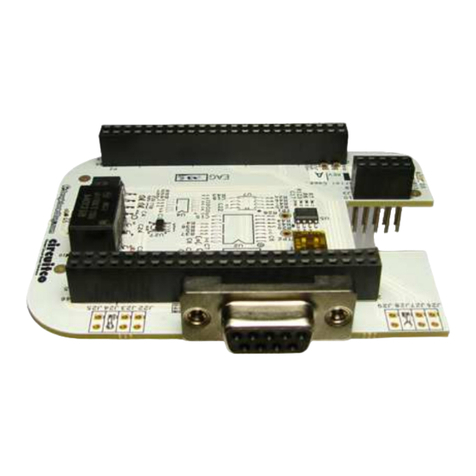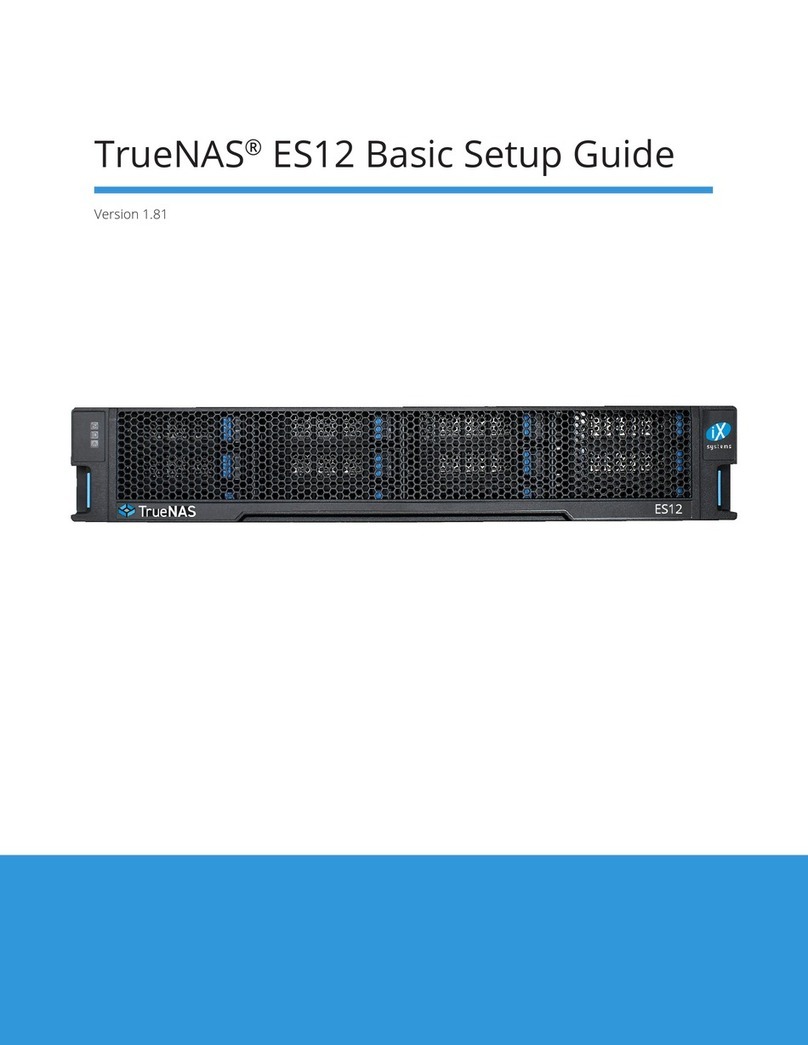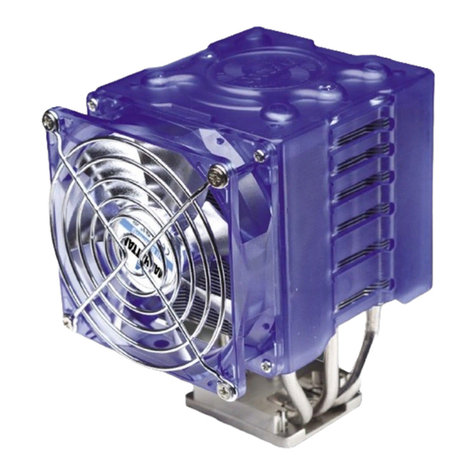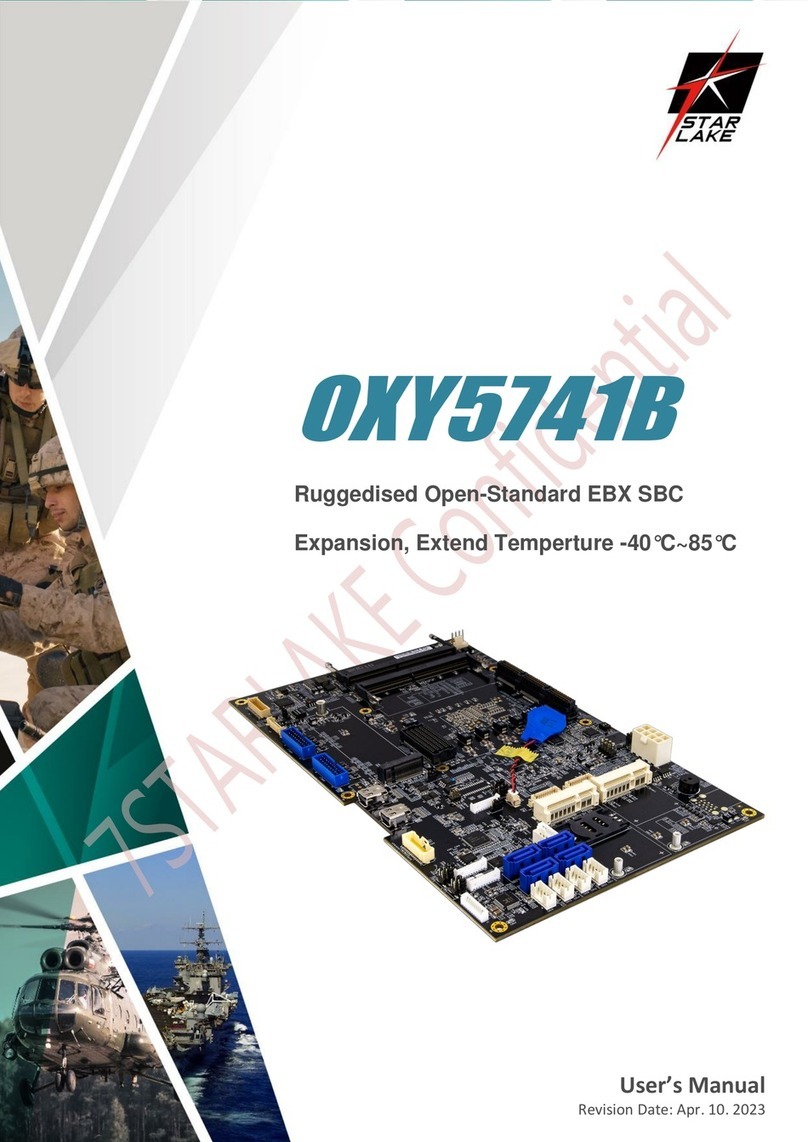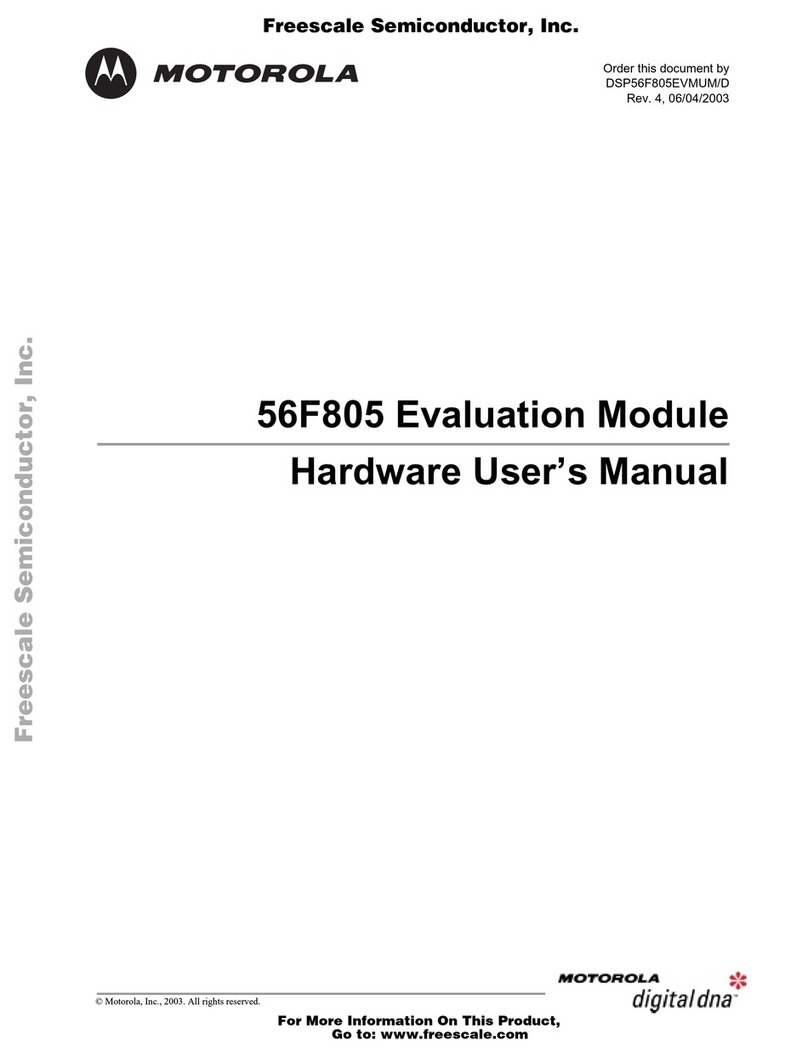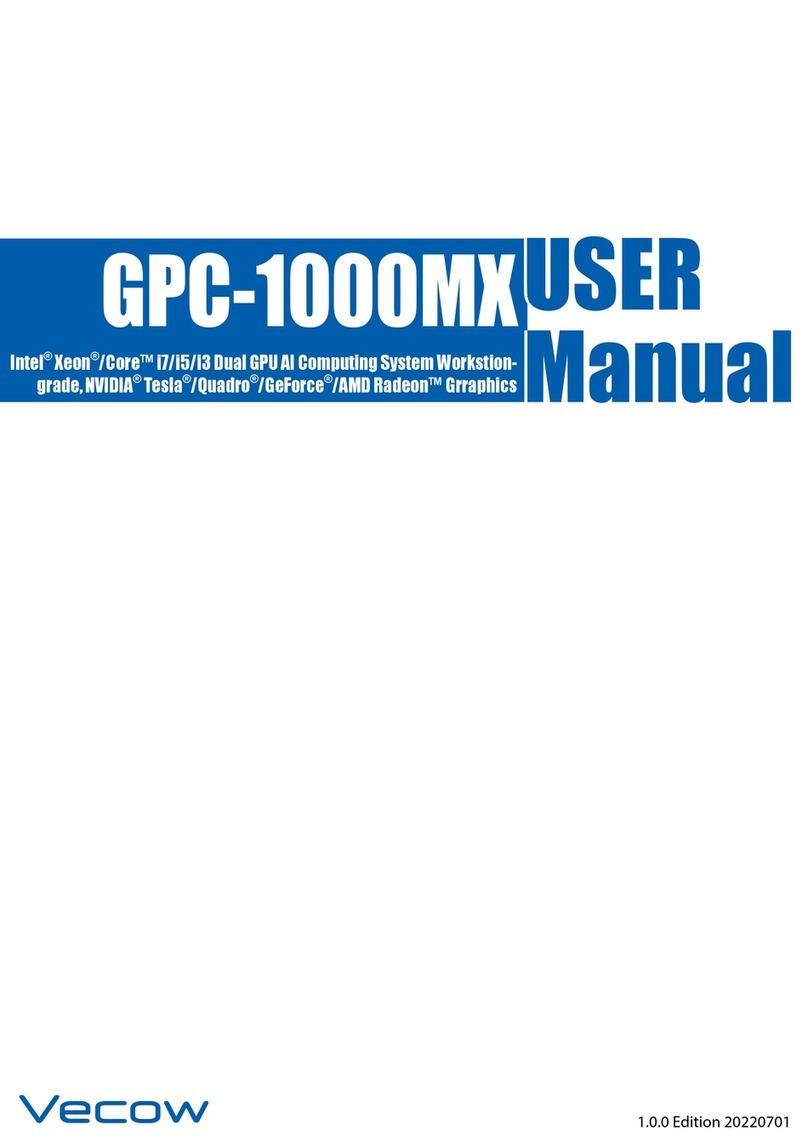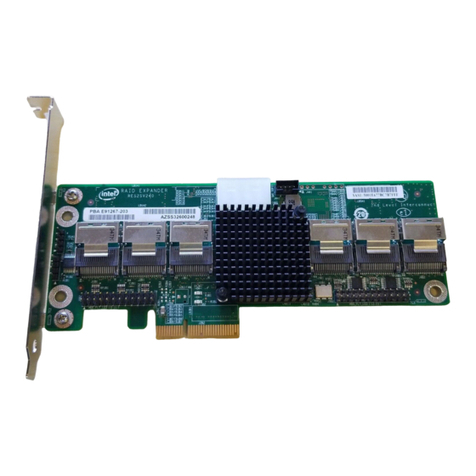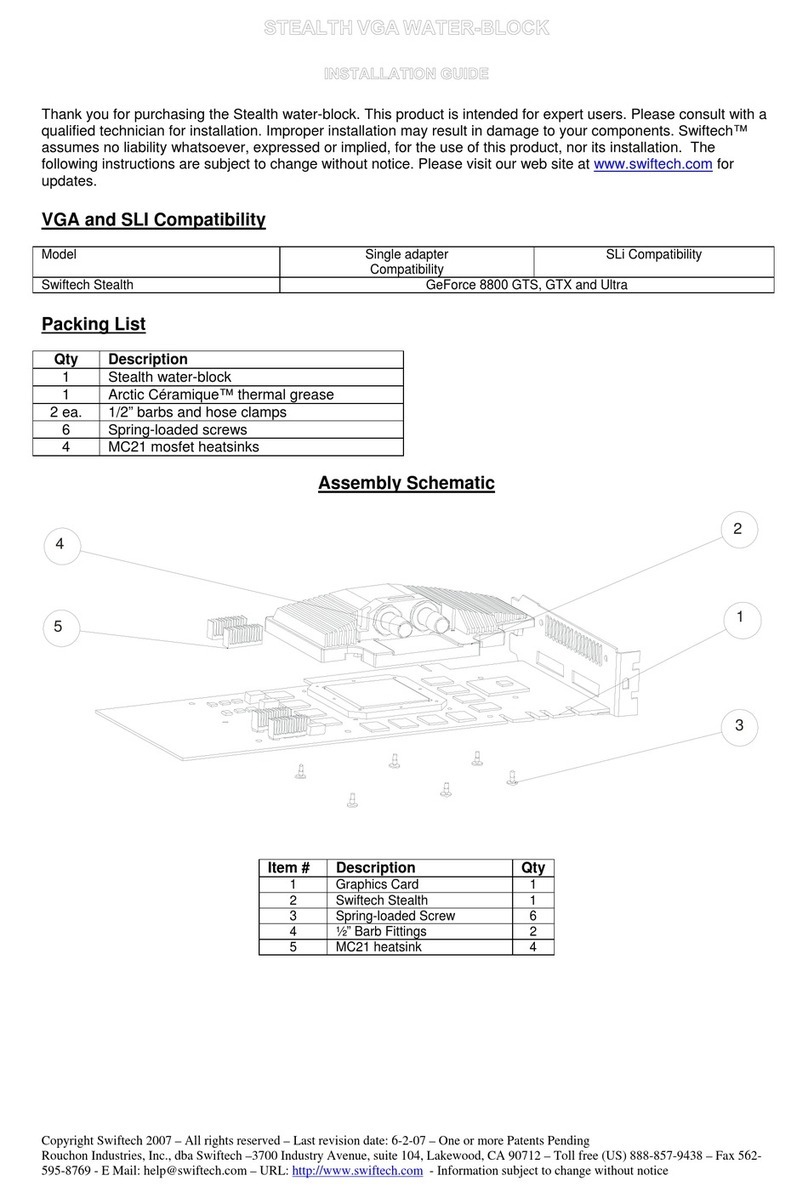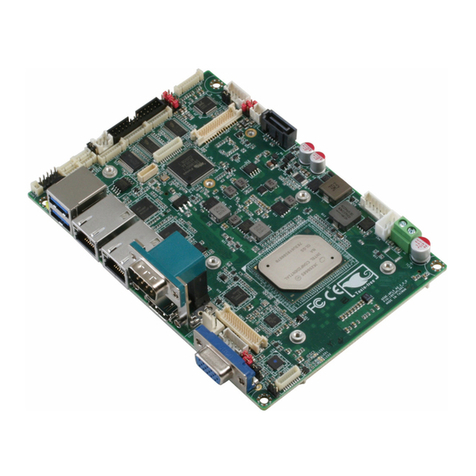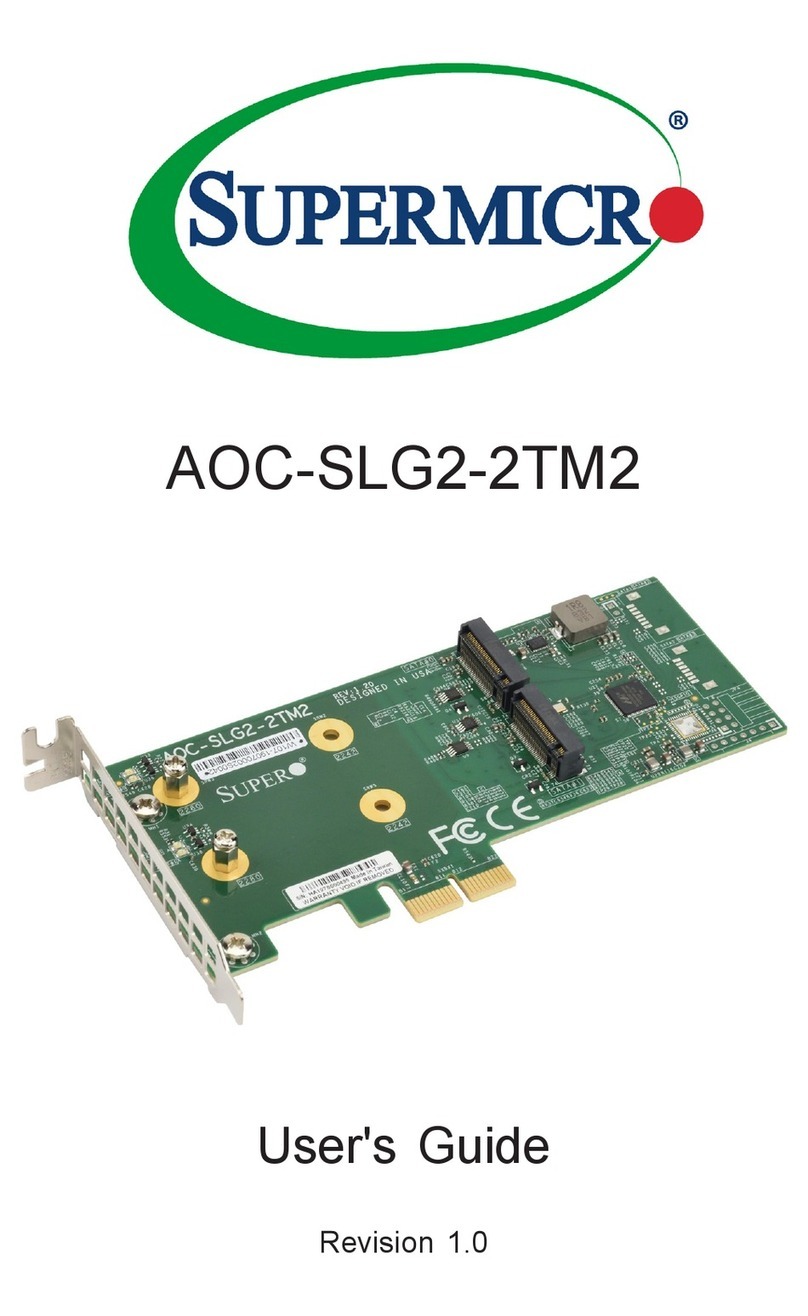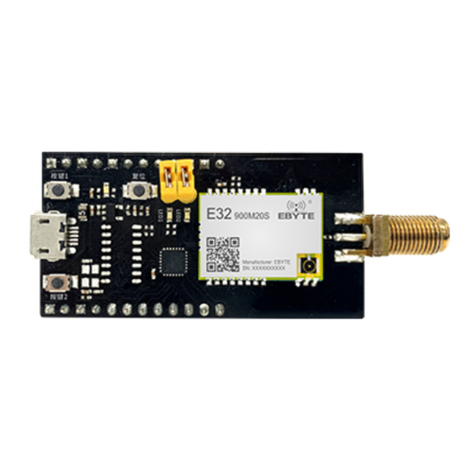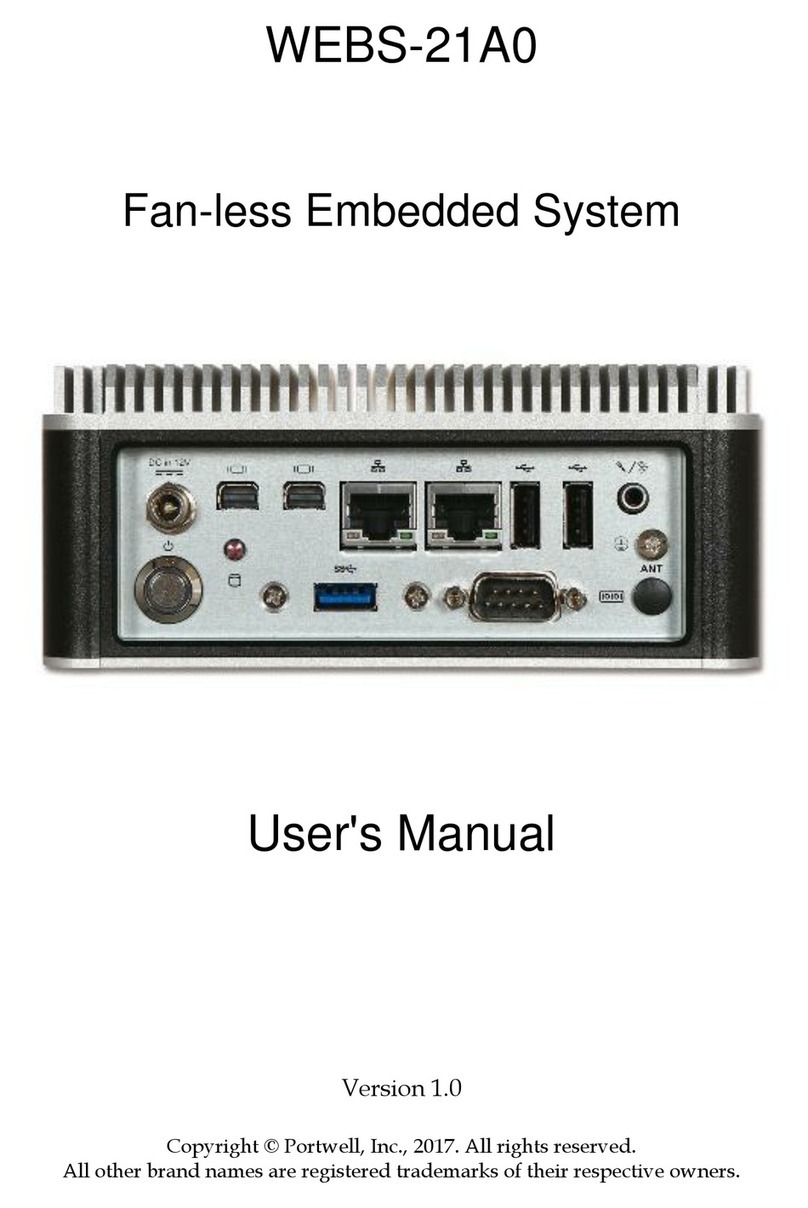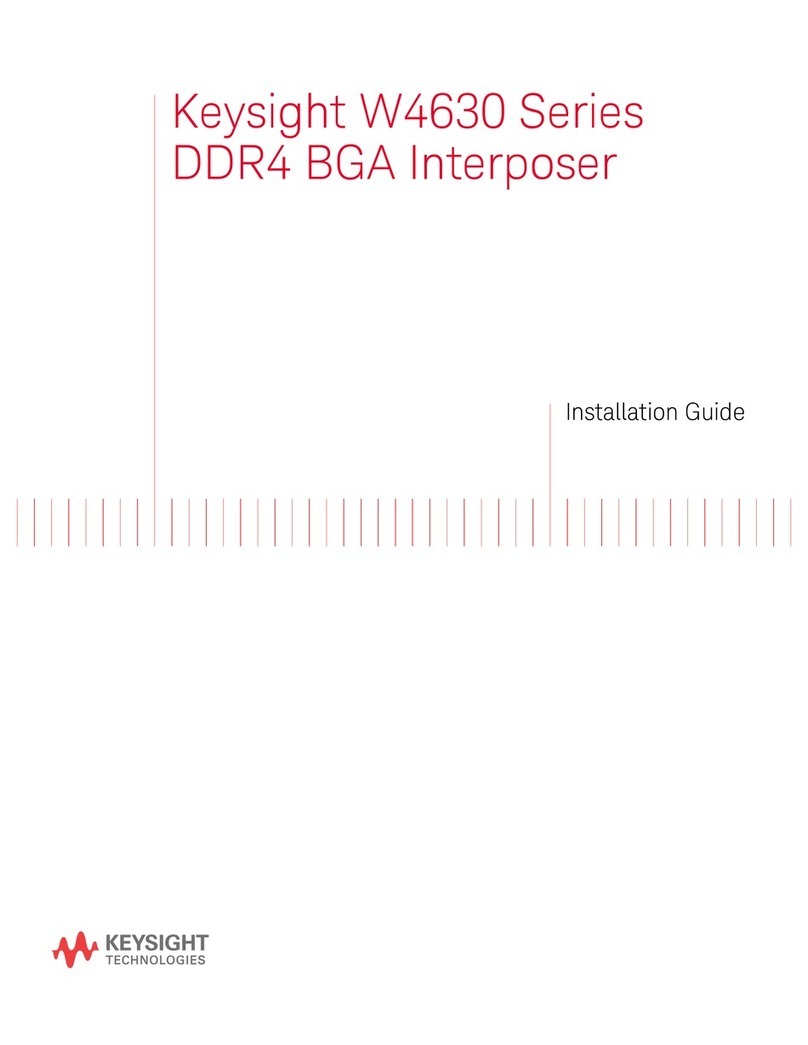BeagleBone LCD7 Cape User manual

BeagleBone
LCD7 Cape
System Reference Manual
Revision A
3
Page 1 of 27
BeagleBone LCD7 Cape Rev A3
System Reference Manual
Revision A3
September 1st, 2012

BeagleBone
LCD7 Cape
System Reference Manual
Revision A
3
Page 2 of 27
THIS DOCUMENT
This work is licensed under the Creative Commons Attribution-Share Alike 3.0 Unported
License. To view a copy of this license, visit http://creativecommons.org/licenses/by-
sa/3.0/ or send a letter to Creative Commons, 171 Second Street, Suite 300, San
Francisco, California, 94105, USA.
All derivative works are to be attributed to BeagleBoardtoys.com.
For more information, see http://creativecommons.org/license/results-
one?license_code=by-sa
BEAGLEBONE LCD7 CAPE DESIGN
These design materials referred to in this document are
*NOT SUPPORTED* and DO NOT constitute a
reference design. Only “community” support is allowed via
resources at Beagleboardtoys.com/support
THERE IS NO WARRANTY FOR THE DESIGN
MATERIALS, TO THE EXTENT PERMITTED BY
APPLICABLE LAW. EXCEPT WHEN OTHERWISE
STATED IN WRITING THE COPYRIGHT HOLDERS
AND/OR OTHER PARTIES PROVIDE THE DESIGN
MATERIALS “AS IS” WITHOUT WARRANTY OF
ANY KIND, EITHER EXPRESSED OR IMPLIED,
INCLUDING, BUT NOT LIMITED TO, THE IMPLIED
WARRANTIES OF MERCHANTABILITY AND

BeagleBone
LCD7 Cape
System Reference Manual
Revision A
3
Page 3 of 27
FITNESS FOR A PARTICULAR PURPOSE. THE
ENTIRE RISK AS TO THE QUALITY AND
PERFORMANCE OF THE DESIGN MATERIALS IS
WITH YOU. SHOULD THE DESIGN MATERIALS
PROVE DEFECTIVE, YOU ASSUME THE COST OF
ALL NECESSARY SERVICING, REPAIR OR
CORRECTION.
We mean it; these design materials may be totally
unsuitable for any purposes.

BeagleBone
LCD7 Cape
System Reference Manual
Revision A
3
Page 4 of 27
BeagleBoardToys provides the enclosed product(s) under the following conditions:
This evaluation board/kit is intended for use for ENGINEERING DEVELOPMENT, DEMONSTRATION, OR
EVALUATION PURPOSES ONLY and is not considered by BeagleBoardtoys.com to be a finished end-
product fit for general consumer use. Persons handling the product(s) must have electronics training and
observe good engineering practice standards. As such, the goods being provided are not intended to be
complete in terms of required design-, marketing-, and/or manufacturing-related protective considerations,
including product safety and environmental measures typically found in end products that incorporate such
semiconductor components or circuit boards. This evaluation board/kit does not fall within the scope of the
European Union directives regarding electromagnetic compatibility, restricted substances (RoHS), recycling
(WEEE), FCC, CE or UL, and therefore may not meet the technical requirements of these directives or other
related directives.
Should this evaluation board/kit not meet the specifications indicated in the User’s Guide, the board/kit may
be returned within 30 days from the date of delivery for a full refund. THE FOREGOING WARRANTY IS
THE EXCLUSIVE WARRANTY MADE BY SELLER TO BUYER AND IS IN LIEU OF ALL OTHER
WARRANTIES, EXPRESSED, IMPLIED, OR STATUTORY, INCLUDING ANY WARRANTY OF
MERCHANTABILITY OR FITNESS FOR ANY PARTICULAR PURPOSE.
The user assumes all responsibility and liability for proper and safe handling of the goods. Further, the user
indemnifies BeagleBoardtoys.com from all claims arising from the handling or use of the goods. Due to the
open construction of the product, it is the user’s responsibility to take any and all appropriate precautions
with regard to electrostatic discharge.
EXCEPT TO THE EXTENT OF THE INDEMNITY SET FORTH ABOVE, NEITHER PARTY SHALL BE
LIABLE TO THE OTHER FOR ANY INDIRECT, SPECIAL, INCIDENTAL, OR CONSEQUENTIAL
DAMAGES.
BeagleBoardtoys.com currently deals with a variety of customers for products, and therefore our
arrangement with the user is not exclusive. BeagleBoardtoys.com assumes no liability for applications
assistance, customer product design, software performance, or infringement of patents or services
described herein.
Please read the User’s Guide and, specifically, the Warnings and Restrictions notice in the User’s Guide
prior to handling the product. This notice contains important safety information about temperatures and
voltages. For additional information on BeagleBoardtoys.com environmental and/or safety programs, please
contact visit BeagleBoardtoys.com.
No license is granted under any patent right or other intellectual property right of BeagleBoard.org covering
or relating to any machine, process, or combination in which such BeagleBoardtoys.com products or
services might be or are used.
Mailing Address:
Beagleboardtoys.com
1380 Presidential Dr. #100
Richardson, TX 75081
U.S.A.

BeagleBone
LCD7 Cape
System Reference Manual
Revision A
3
Page 5 of 27
WARRANTY: The BeagleBone LCD7 Cape is warranted against defects in materials and
workmanship for a period of 90 days from purchase. This warranty does not cover any problems
occurring as a result of improper use, modifications, exposure to water, excessive voltages, abuse,
or accidents. All boards will be returned via standard mail if an issue is found. If no issue is found
or express return is needed, the customer will pay all shipping costs.
Before returning the board, please visit Beagleboardtoys.com/support
To return a defective board, please request an RMA at
http://www.beagleboardtoys.com/support/rma

BeagleBone
LCD7 Cape
System Reference Manual
Revision A
3
Page 6 of 27
Table of Contents
FIGURES...................................................................................................................................................... 7
TABLES........................................................................................................................................................ 7
1.0
INTRODUCTION............................................................................................................................... 9
2.0
CHANGE HISTORY.........................................................................................................................10
2.1
CHANGE HISTORY............................................................................................................................10
2.2
A1 VS.A2 ........................................................................................................................................10
3.0
BEAGLEBONE LCD7 CAPE OVERVIEW...................................................................................11
3.1
DESCRIPTIONS..................................................................................................................................11
3.2
IN THE BOX .....................................................................................................................................12
3.3
GETTING STARTED...........................................................................................................................13
3.4
REPAIRS...........................................................................................................................................13
4.0
FEATURES AND SPECIFICATIONS............................................................................................14
4.1
KEY COMPONENT LOCATIONS .........................................................................................................15
4.2
LCD PANEL.....................................................................................................................................16
4.3
INDICATORS.....................................................................................................................................17
4.4
EXPANSION HEADER........................................................................................................................17
4.5
BUTTONS .........................................................................................................................................17
4.6
DC POWER CONNECTOR..................................................................................................................17
4.7
MECHANICAL SPECIFICATIONS ........................................................................................................18
4.8
ELECTRICAL SPECIFICATIONS ..........................................................................................................18
5.0
SYSTEM ARCHITECTURE AND DESIGN..................................................................................19
5.1
SYSTEM BLOCK DIAGRAM...............................................................................................................19
5.2
LCD INTERFACE..............................................................................................................................20
5.2.1
Expansion connectors............................................................................................................20
5.2.2
Non-Inverting Bus Transceiver..............................................................................................20
5.2.3
Touchscreen Interface ...........................................................................................................21
5.3
POWER MANAGEMENT.....................................................................................................................22
5.3.1
LCD Power Supply................................................................................................................22
5.3.2
Backlight Power Supply.........................................................................................................23
5.4
EEPROM ........................................................................................................................................24
5.4.1
EEPROM Address .................................................................................................................25
5.4.2
I2C Bus..................................................................................................................................25
6.0
MECHANICAL INFORMATION...................................................................................................26
7.0
DESIGN MATERIALS.....................................................................................................................27

BeagleBone
LCD7 Cape
System Reference Manual
Revision A
3
Page 7 of 27
Figures
Figure 1. The BeagleBone LCD7 Cape........................................................................ 11
Figure 2. BeagleBone LCD7 Cape Box Contents........................................................ 12
Figure 3. Key Components on top side........................................................................ 15
Figure 4. Key Components on bottom side.................................................................. 16
Figure 5. BeagleBone LCD7 Cape High Level Block Diagram.................................. 19
Figure 5. LCD Signals at expansion connector J1 ....................................................... 20
Figure 6. LCD Signals buffered through U1................................................................ 21
Figure 7. BeagleBone LCD7 Power Management IC.................................................. 22
Figure 8. BeagleBone LCD7 Backlight Circuit ........................................................... 24
Figure 9. BeagleBone LCD7 Cape EEPROM.............................................................. 25
Figure 10. BeagleBone LCD7 Cape Dimensions Drawing........................................ 26
Tables
Table 1. Change History............................................................................................. 10
Table 2. BeagleBone LCD7 Cape Features ................................................................ 14

BeagleBone
LCD7 Cape
System Reference Manual
Revision A
3
Page 8 of 27
NOTES

BeagleBone
LCD7 Cape
System Reference Manual
Revision A
3
Page 9 of 27
1.0 Introduction
This document is the System Reference Manual for the BeagleBone LCD7 Cape, an add-
on board for the BeagleBone.
This document is intended as a guide to assist anyone purchasing or who are considering
purchasing the board to understand the overall design and usage of the BeagleBone
LCD7 Cape from the system level perspective.
The design is subject to change without notice as we will work to keep improving the
design as the product matures.
The key sections in this document are:
Section 2.0 – Change History
Provides tracking for the changes made to the System Reference Manual.
Section 3.0 – Overview
This is a high level overview of the BeagleBone LCD7 Cape.
Section 4.0 – Features and Specification
Provided here are the features and electrical specifications of the board.
Section 5.0 – System Architecture and Design
This section provides information on the overall architecture and design of the
BeagleBone LCD7 Cape. This is a very detailed section that goes into the design
of each circuit on the board.
Section 6.0 – Mechanical
Information is provided here on the dimensions of the BeagleBone LCD7 Cape.
Section 7.0 – Design Materials
This section provides information on where to get the design files.

BeagleBone
LCD7 Cape
System Reference Manual
Revision A
3
Page 10 of 27
2.0 Change History
2.1 Change History
Table 1 tracks the changes made for each revision of this document.
Table 1. Change History
Rev
Changes Date
By
A1 Initial release. 04/25/2012 BBT
A2 1. LCD_AVDD_EN Signal is moved from J2-42 (GPIO0_7) to J1-20
(GPIO1_31)
2. PCB revision changed from -01 to -02 06/21/2012 BBT
A3 Add A2 vs. A3 section (2.2) 09/01/2012 BBT
2.2 A2 vs. A3
In revision A3 the Enter button has been moved from GPIO3_19 to GPIO0_3 and
LCD_DVDD_EN has moved from GPIO1_31 to GPIO0_2. These changes in GPIOs are
to support awake interrupt in sleeping mode.
The PCB revision is also changed from BB-Bone-LCD7-PCB-03 to BB-Bone-LCD7-
PCB-04.
2.3 A1 vs. A2
The only design change in A2 is that the LCD_AVDD_EN signal is moved from pin 42
of connector J2 to pin 20 of connector J1. In revision A1, LCD_AVDD_EN signal is
mapped to GPIO0_7 which is also a DMA interrupt. By moving LCD_AVDD_EN
signal, this DMA interrupt is now available when BeagleBone is used with LCD7 Cape.
Both revisions should not have any functional difference.
The PCB revision is also changed from -02 to -03.

BeagleBone
LCD7 Cape
System Reference Manual
Revision A
3
Page 11 of 27
3.0 BeagleBone LCD7 Cape Overview
3.1 Descriptions
The BeagleBone LCD7 cape provides an LCD solution with touchscreen capability for
BeagleBone boards. The 7" TFT LCD screen, attached to the topside of the board, can
display up to a resolution of 800x480 and is a 4-wire resistive touchscreen. The board is
equipped with seven buttons located at finger-friendly positions. These buttons include
five user buttons that are connected to GPIO signals as well as power and reset. The
backside of the cape is where the BeagleBone and additional cape can be mounted.
Figure 1 below is a picture of the board.
Figure 1. The BeagleBone LCD7 Cape

BeagleBone
LCD7 Cape
System Reference Manual
Revision A
3
Page 12 of 27
3.2 In The Box
The final packaged BeagleBone LCD7 Cape Rev A2 product will contain the following
items: -1 BeagleBone LCD7 Cape with standoffs
Figure 2. BeagleBone LCD7 Cape Box Contents

BeagleBone
LCD7 Cape
System Reference Manual
Revision A
3
Page 13 of 27
3.3 Getting Started
Following the instructions below to start using your BeagleBone LCD7 Cape:
1. Mount the BeagleBone to the BeagleBone Connectors on the LCD7 Cape.
•Note: The BeagleBone Connectors are the set of male connectors on the
backside of the LCD7 Cape.
2. Make sure the SD card using with BeagleBone has Angstrom image 06_18_12 or
later.
3. Plug in a 5V DC power supply to the DC connector on the LCD7 Cape.
4. Following screens will be displayed on the LCD screen:
•BeagleBone logo
•Angstrom log-in prompt
•Auto Calibration utility
5. Follow the instructions given by the Auto Calibration utility to calibrate the LCD7
touchscreen.
•Note: The Auto Calibration utility is automatically displayed when the
card is used for the first time. This utility can be run again under menu
System > Administration > Calibrate Touchsreen
6. After calibrated, the Angstrom desktop will be displayed on the LCD screen.
You can start using the board.
3.4 Repairs
If you feel the board is in need of repair, follow the RMA Request process found at
http://www.beagleboardtoys.com/support/rma
Do not send the board in for repair until an RMA
authorization has been provided.
Do not return the board to the distributor unless you want to get a refund. You must get
authorization from the distributor before returning the board.

BeagleBone
LCD7 Cape
System Reference Manual
Revision A
3
Page 14 of 27
4.0 Features and Specifications
This section covers the specifications of the BeagleBone LCD7 Cape and provides a high
level description of the major components and interfaces that make up the board.
Table 2 provides a list of the BeagleBone LCD7 Cape’s features.
Table 2. BeagleBone LCD7 Cape Features
Feature
Display ThreeFive TFC-S9700RTWV35TR-01
LCD Size 7”
Panel Type a-Si TFT active matrix
Resolution 800 x 480
Colors 16.7M
Interface RGB 16-bit
Touch Panel Resistive
Color Depth RGB 16-bit
Power Supply 5V DC on board 5V via expansion
3.3V via expansion
PCB 4.50” x 6.90” 6 layers
Indicators Power LED
User LED
EEPROM Board ID EEPROM
Connectors
Two 46-position male headers
10-position male header
Two 46-position female headers
10-position female header

BeagleBone
LCD7 Cape
System Reference Manual
Revision A
3
Page 15 of 27
4.1 Key Component Locations
Figure 3 below shows the top side locations of key components on the PCB layout of the
BeagleBone LCD7 Cape:
Figure 3. Key Components on top side

BeagleBone
LCD7 Cape
System Reference Manual
Revision A
3
Page 16 of 27
Figure 4 below shows key components on the back side of the board:
Figure 4. Key Components on bottom side
4.2 LCD Panel
The LCD Panel is supplied by ThreeFive. The Model number is TFC-
S9700RTWV35TR-01. This display uses amorphous silicon (a-Si) as a switching device.
This model is composed of a single 7.0 (16:9) inches transmissive type main TFT LCD
panel. The resolution is 800x480 and it can display up to 16.7M colors.

BeagleBone
LCD7 Cape
System Reference Manual
Revision A
3
Page 17 of 27
4.3 Indicators
There is one Power LED and one User LED located on board. The Power LED indicates
that power is applied to the board. The User LED is controlled by GPIO1_28. These two
LEDs are green when lit and located on the top side of the board and to the right of the
user buttons.
4.4 Expansion Header
There are two sets of connectors located on the bottom side of the board. One set is male
and is used for BeagleBone, whereas the other, which is female, is used to mount an
additional cape. Each set is composed of two 46-position connectors and one 10-position
connector.
4.5 Buttons
The power button and reset button are located underneath the LCD display. These are
standard tactile switches and mounted at right angle. The reset button, when pressed, will
reset the board. The power button, when pressed and held for 10 seconds, will turn off the
board. In addition to those two buttons, the BeagleBone LCD7 also features five different
buttons located next to each other on the top side of the board. These buttons are labeled
as Left, Right, Up, Down, and Enter. They are mapped to different GPIO signals that can
be accessed via expansion header. The reset button and power button, on the other hand,
are connected to the RESET and PWR_BUT respectively which can also be accessed at
expansion connector J2.
4.6 DC Power Connector
A 5V DC power connector P1 is provided onboard. The board can be powered using this
power connector or via the mounted BeagleBone. The connector used is a 2.1mm center
positive x 5.5mm outer barrel. Once plugged in, 5V will be provided to the VDD_5V
power rail, which is also used by the BeagleBone. The 5V DC power connectors on the
BeagleBone LCD7 Cape and the BeagleBone should not be used at the same time.

BeagleBone
LCD7 Cape
System Reference Manual
Revision A
3
Page 18 of 27
4.7 Mechanical Specifications
Size: 4.50” x 6.90”
Layers: 6
PCB thickness: .062”
RoHS Compliant: Yes
Weight: TBW
4.8 Electrical Specifications
Table 3 is the electrical specification of the external interfaces to the BeagleBone LCD7
panel.
Table 3. BeagleBone LCD7 Electrical Specifications
Specification Min Typ Max Unit
Power
Input Voltage DC 4.8 5 5.2 V
Current DC 1.0 A
Environmental
Temperature range 0 +85 C

BeagleBone
LCD7 Cape
System Reference Manual
Revision A
3
Page 19 of 27
5.0 System Architecture and Design
This section provides a high level description of the design of the BeagleBone LCD7
Cape and its overall architecture.
5.1 System Block Diagram
Figure 7 is the high level block diagram of the BeagleBone LCD7 Cape.
J1
B
E
A
G
L
E
B
O
N
E
C
O
N
N
J2
B
E
A
G
L
E
B
O
N
E
C
O
N
N
J5
E
X
P
C
O
N
N
E
C
T
O
R
J6
E
X
P
C
O
N
N
E
C
T
O
R
U1
32-BIT TRANSCEIVER
(74AVC32T245)
P2
L
C
D
C
O
N
N
E
C
T
O
R
16
LCD_DATA[ ..15]
4
LCD_CONTROL
16
LCD_DATA[ ..15]
4
LCD_CONTROL
U2
LCD SUPPLY
(TPS651 5)
AVDD_1 V
VGH_15V
VGL_-7V
VCOM
VDD_LCD
LCD_AVDD_EN
P3
TOUCHSREEN
CONNECTOR
AIN[ ..3]
4
P5
BACKLIGHT
CONNECTOR
U3
DC/DC BOOST
(TPS61 8 )
EHRPWM1A 2
LED+/-
U4
EEPROM
(CAT24C256W)
I2C2
2
SWITCHES
LED
GPIO
GPIO
46
46
J3
B
L
C
O
N
N
J4
B
L
C
O
N
N
1
7
Figure 5. BeagleBone LCD7 Cape High Level Block Diagram

BeagleBone
LCD7 Cape
System Reference Manual
Revision A
3
Page 20 of 27
5.2 LCD Interface
5.2.1 Expansion connectors
The LCD interface of the BeagleBone LCD7 Cape uses 16 data and 4 control signals
from the BeagleBone’s expansion connectors. By using only 16 signals for LCD_DATA,
more pins can be available at the expansion header for other capes. The quality of 16-bit
LCD output, nonetheless, is very similar to 24-bit. The 4 control signals are horizontal
sync (LCD_HSYNC), vertical sync (LCD_VSYNC), enable input (LCD_EN), and the
pixel clock (LCD_PCLK). Figure 5 shows these LCD signals at expansion connector J1.
Figure 5. LCD Signals at expansion connector J1
5.2.2 Non-Inverting Bus Transceiver
The LCD signals are buffered through U1 (74AVC32T245), which is a 32-bit dual-
supply bus transceiver. 74AVC32T245 features two ports, A and B. Each port tracks a
separate power-supply rail. This allows for universal low-voltage translation. The output-
enable (OE) input specifies whether the buses are isolated. The direction-control input, on
the other hand, determines the data transmission direction. On the BeagleBone LCD7
Cape, no voltage translation required since its two power rails are both 3.3V. Both the
direction-control and output-enable inputs are set low, so the data are transmitted from B
Table of contents
Other BeagleBone Computer Hardware manuals
Popular Computer Hardware manuals by other brands
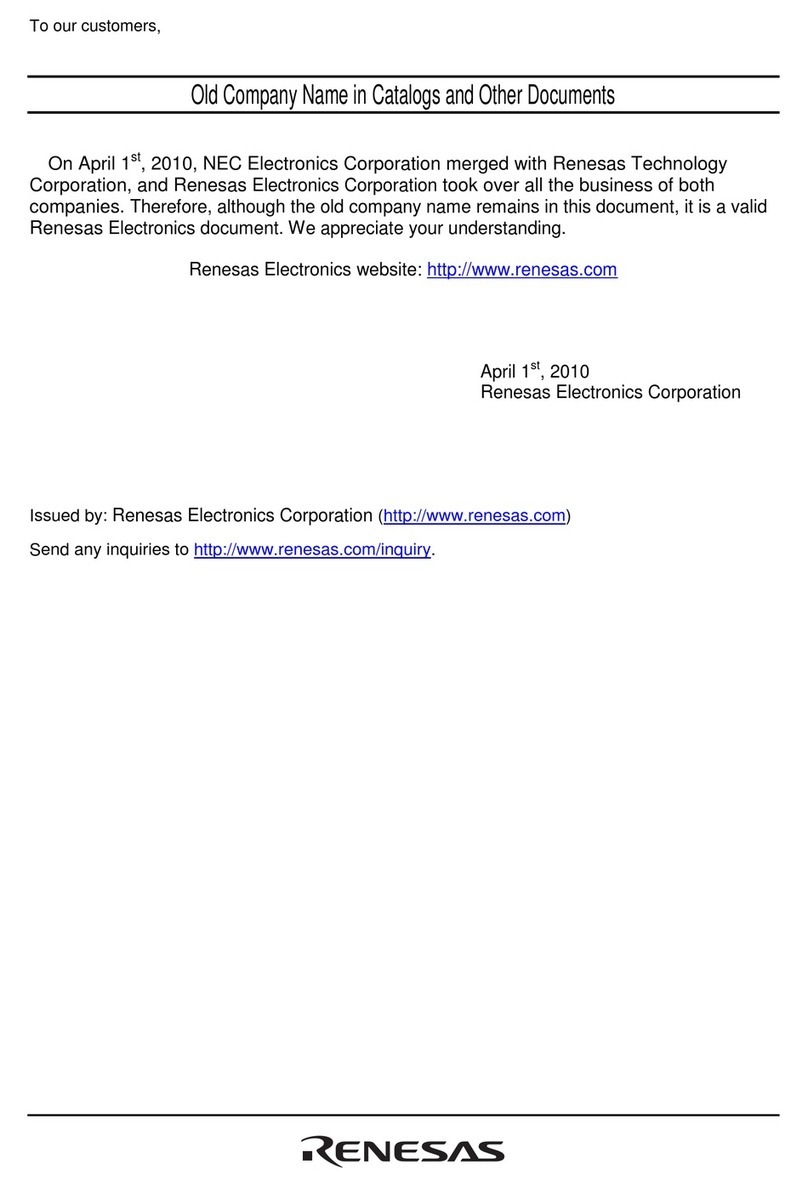
Renesas
Renesas Single-Chip Microcomputer H8SX/1622 quick start guide
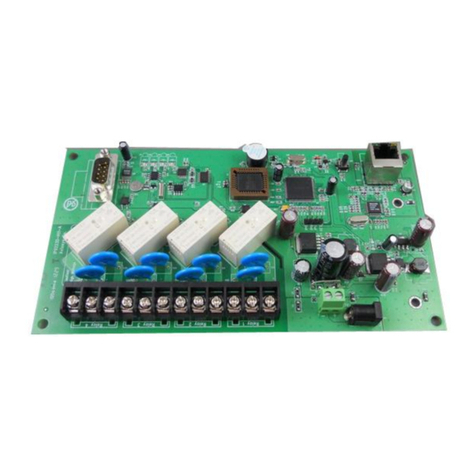
Aviosys
Aviosys IP Power 9223K-D user manual
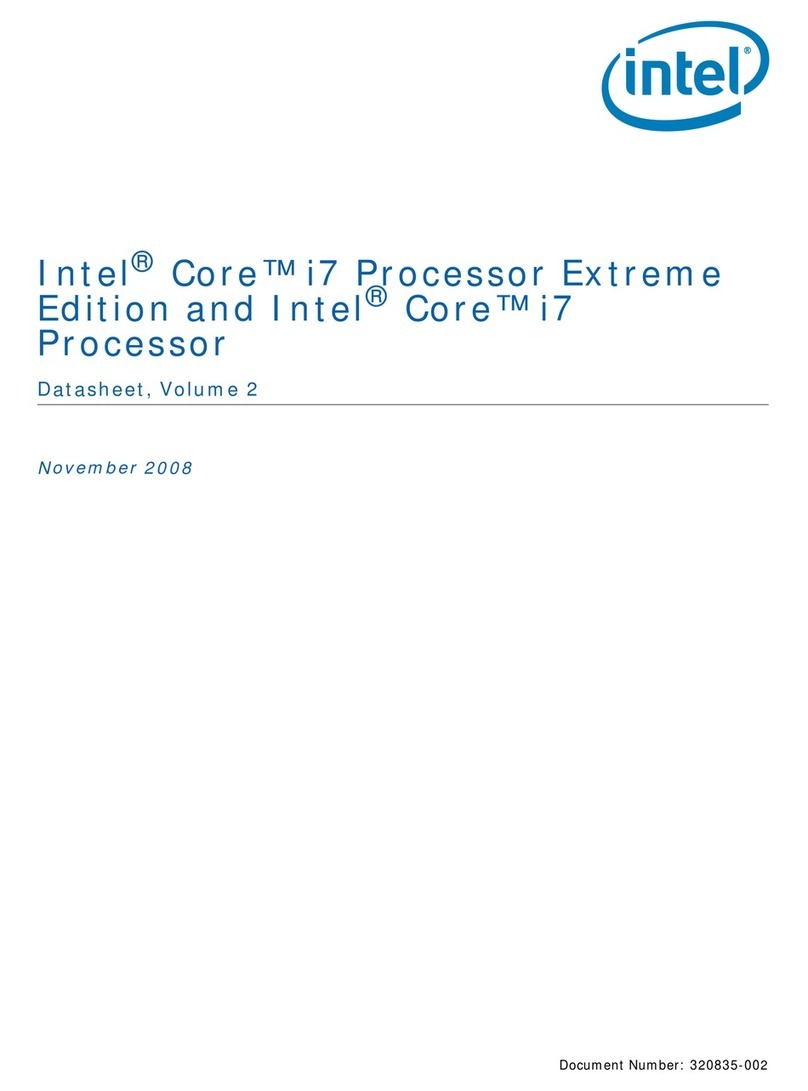
Intel
Intel BX80605I7870 - Core i7 2.93 GHz Processor datasheet
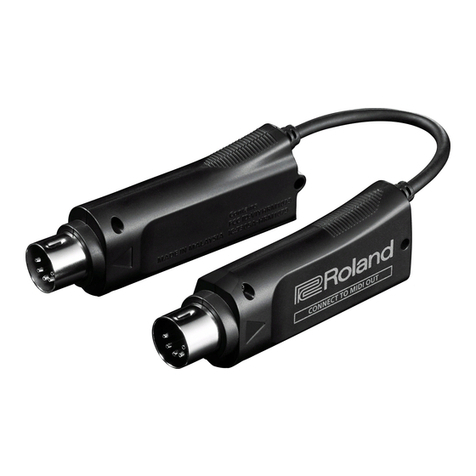
Roland
Roland WM-1 owner's manual
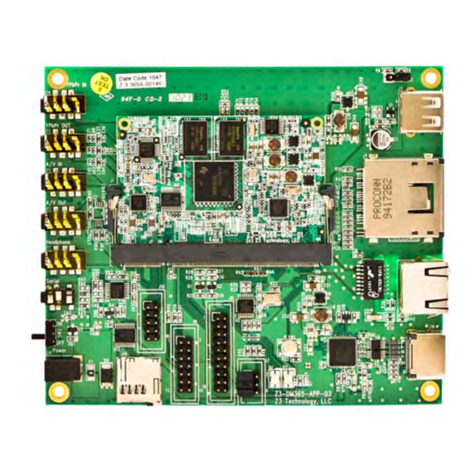
Z3 Technology
Z3 Technology Z3-DM368-ZDVR user guide
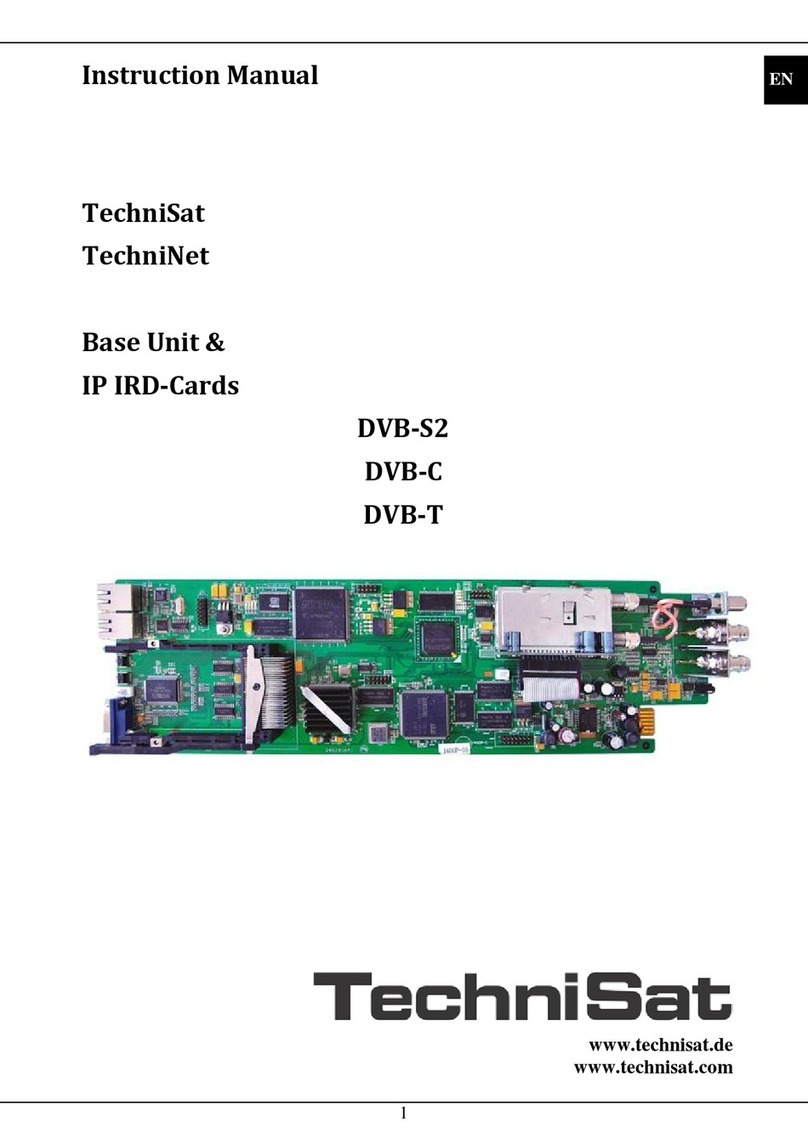
TechniSat
TechniSat DVB-S2 instruction manual
